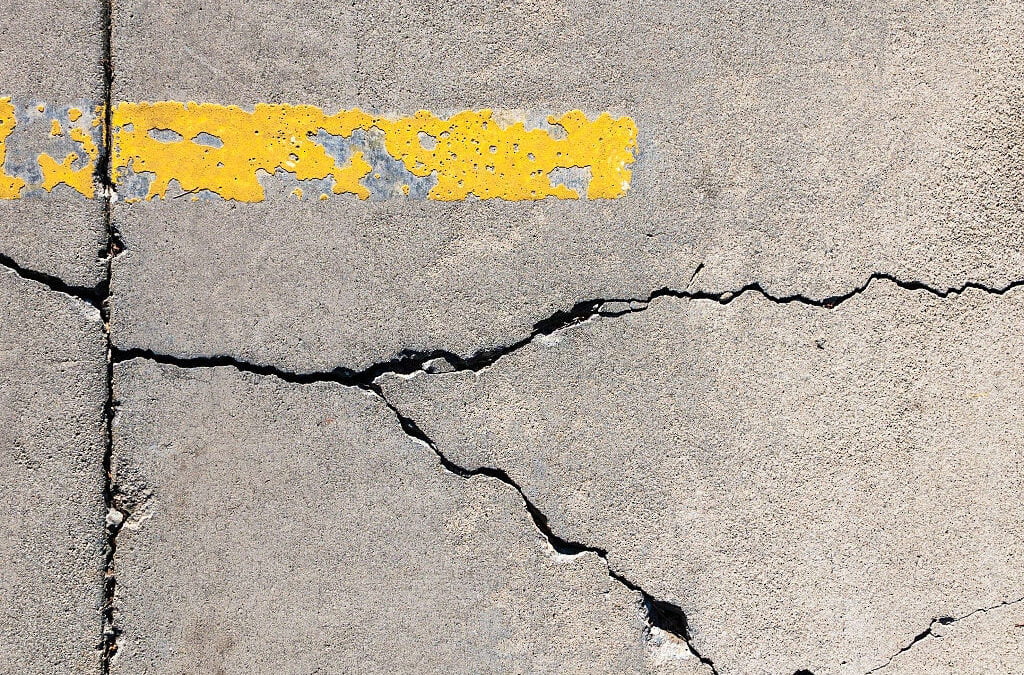A cracked concrete driveway can not only be an eyesore but can also be a potential hazard. Cracks in the driveway can allow water to seep in, causing further damage and weakening the structure. Repairing a cracked concrete driveway is a relatively simple task that homeowners can do with a few essential tools and materials. Here is a step-by-step guide on how to repair a cracked concrete driveway.
- Clean the driveway: Cleaning the cracked area thoroughly is important before starting the repair. Use a broom or a leaf blower to remove debris, dirt, or loose concrete from the cracks. A clean surface will ensure better adhesion of the repair material.
- Prepare the crack: Use a chisel or a screwdriver to widen the crack slightly. This will help create a better bond with the repair material. Be careful not to widen the crack too much, as it may weaken the surrounding concrete.
- Remove loose concrete: Use a wire brush to remove any loose concrete particles from the crack. This will ensure that the repair material adheres properly to the surface.
- Apply a concrete bonding agent: Before filling the crack, apply a concrete bonding agent to the inside. This will help create a strong bond between the old and new concrete. Follow the manufacturer’s instructions for the application of the bonding agent.
- Fill the crack: Use a concrete patching compound or a concrete mix to fill the crack. The compound or mix should have a consistency similar to oatmeal. Fill the crack, slightly overfilling it to allow for settlement.
- Smooth the surface:
- Use a trowel or a putty knife to smooth the surface of the repair material.
- Make sure the surface is level and flush with the surrounding concrete.
- Remove any excess material.
- Cure the repair: The repair material can cure and dry according to the manufacturer’s instructions. This usually takes around 24 hours. Protecting the repair from rain, excessive heat, or foot traffic is important.
- Seal the driveway: Once the concrete repair has fully cured, it is recommended to seal the entire driveway to protect it from further damage. Use a concrete sealer specifically designed for driveways. Follow the manufacturer’s instructions for application.
- Regular maintenance: To prevent future cracks and damage, it is important to maintain your concrete driveway regularly. Keep the surface clean by sweeping or power washing it regularly. Avoid using de-icing chemicals during winter as they can cause damage to the concrete. Repair any minor cracks or damage as soon as they appear to prevent further deterioration.
Repairing a cracked concrete driveway is a relatively simple task that homeowners can do with basic DIY skills. By following these steps, you can restore the appearance and functionality of your driveway. Remember always to follow safety precautions and wear protective gear, such as gloves and goggles, when working with concrete. If the cracks are extensive or severe damage, it is best to consult a professional for further assessment and repair.
Gatlinbyrd Cement is your go-to concrete company for all your driveway repair and maintenance needs. Our experienced concrete contractors are equipped with the skills and materials to quickly and effectively address cracks, damage, and other issues with your concrete driveway. Contact Gatlinbyrd Cement today to learn more about our comprehensive concrete services and how we can help restore the beauty and functionality of your home’s driveway.
Frequently Asked Questions
How can I tell how bad the cracks in my driveway are?
Measure the width and depth of the cracks. Thin cracks are usually less serious, while wider cracks might need a closer look.
Should I use a patching compound or a sealant for my driveway cracks?
Use patching compound for larger, deeper cracks as it’s sturdy like concrete. Sealant works best for smaller, surface-level cracks.
How do I apply patching compound correctly?
After putting on a bonding agent, fill the crack with patching compound using a trowel, pressing down to avoid air gaps. Make sure it’s slightly overfilled as it will settle when it dries.
How long do different repair materials take to dry?
Sealants dry quickly, often in a few hours, while patching compounds should ideally be left to dry for at least 24 hours before the area is used again.
Can the weather mess up my driveway repair?
Yes, for the best results, repair your driveway in dry weather with temperatures between 50°F and 60°F. Avoid repairing in extreme heat or cold, or when it might rain.
How can I stop cracks from coming back?
Keep your driveway clean, ensure good drainage, avoid heavy loads, and seal it every 2 to 3 years to protect from weather and wear.

